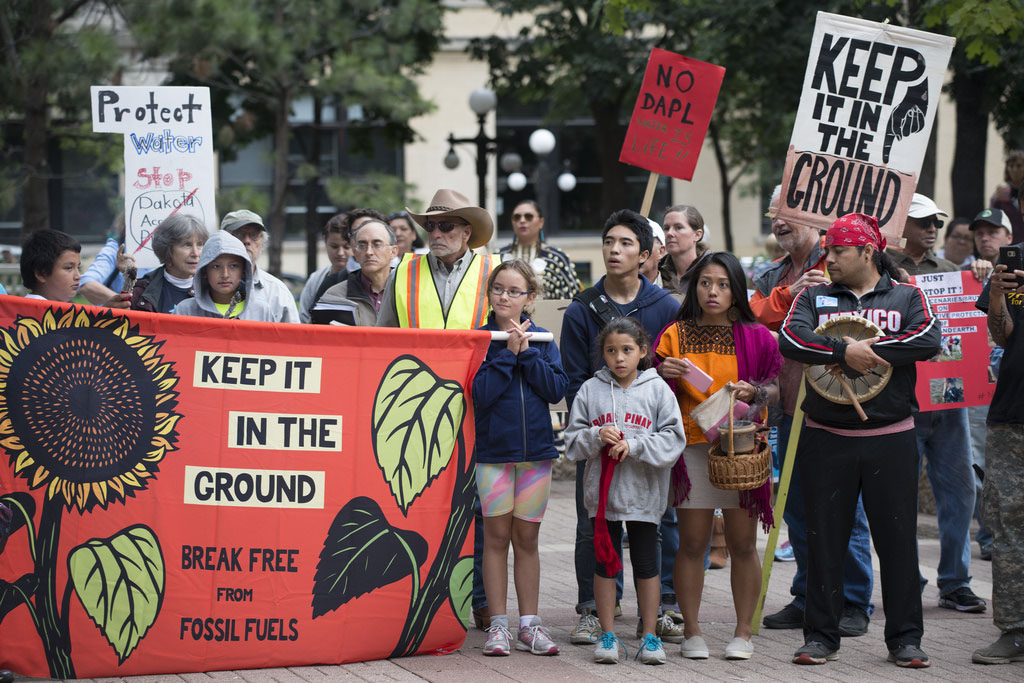The Dakota Access Pipeline is the hottest activist issue in America right now. I know this because according to Facebook, all my friends went to North Dakota to protest this past week.
For those who don’t know, The Dakota Access Pipeline was originally proposed in 2014 by Dakota Access, a subsidiary of Energy Transfer Partners. If built, this pipeline would sit 38 inches underground and would stretch 1,134 miles carrying 470,000 barrels of crude oil a day out of North Dakota. It would run directly under the Missouri River at Lake Oahe and is only 45 miles shorter than the infamous Keystone Pipeline.
From its start, the proposal has been met with complaints. In Iowa, farmers and landowners objected to the pipeline citing environmental concerns as far back as 2014. Recently, the heart of the protest rages at the site where the line would cross Cannon Ball, Sioux County, in North Dakota.
Residents of the Standing Rock Sioux Tribe have voiced major concerns that a leak in the pipe would poison their water supply and construction would damage sacred sites and burial places.
Cannon Ball has become a flash point for protests, and people from all over the country have come to join locals in trying to stop construction. The Obama Administration has recently stepped in and ordered a stop to construction around Lake Oahe until the Army Corps of Engineers can revisit complaints about this portion of the line.
In their defense, Dakota Access has promised state-of-the-art oversight of the pipeline and cited their steady track record in safety. They also claim that with new and improved internal infrastructure (i.e. pipelines) our country could close the gap between the amount of oil we produce in the world, which is third, to the amount of oil we consume, where we come in at first place—something that probably has merit.
Aside from environmental fears, the real problem of the pipeline in North Dakota is tribal sovereignty. Tribal sovereignty refers to a tribe’s rights to govern themselves and the existence of a government-to-government relationship between those tribes and the Federal Government. This means that Federal Government must interact with and consult the tribe just like it would any other governing body whose land it wanted to use.
The Standing Rock Sioux claim that this didn’t happen and that they were never invited or were unable to attend hearings about the pipeline’s proposal. According to the tribe, an outdated survey was used by the engineers to plan the route and it failed to take in new historical discoveries in the area.
Furthermore, once the discoveries were brought to court, the Dakota Access company began construction on those same exact sites within 24 hours, possibly destroying them forever. One law professor compared the move to New York real estate developer Harry Macklowe’s midnight demolition of two hotels he destroyed in order to get around a new city ordinance.
Some of the land claimed sacred by the tribe was not included in their reservation. Regardless, according to the committee that oversees preservation for congress decrees: “Regulations require Federal agencies to consult with Indian tribes when they attach religious and cultural significance to a historic property regardless of the location of that property.” It’s a procedure set in place as an acknowledgement that many tribes ended up in different places than where they originated because of brutal American governmental policies.
To compound the moral implications, the land in question was originally owned by the Lakota tribes until it was taken away after an illegal war was waged and won by the Grant administration. They forced the tribes to sign away land under threat of starvation. It wasn’t until 1980 that the Supreme Court recognized the wrong and forced the government to pay a fair reparation—one that was never claimed and is now worth more than a billion dollars sits unused in the treasury.
To summarize, the Dakota Access Pipeline is going to run precariously close to water supplies, shipping a substance that we, as a country, are supposed to be weaning ourselves off of. Its construction will harm sites with extreme historic significance and continue an American legacy of repression of Native Americans.
I think I’m going to protest too, just let me log into Facebook.






